![]()
![]()
![]()
Use LEFT and RIGHT arrow keys to navigate between flashcards;
Use UP and DOWN arrow keys to flip the card;
H to show hint;
A reads text to speech;
29 Cards in this Set
- Front
- Back
- 3rd side (hint)
|
What does shewa mark? |
Shewa marks the degree of absence of a vowel sound. |
|
|
|
What does silent shewa mark? |
It marks the complete absence of a vowel sound. (No transliteration.) |
|
|
|
What does vocal shewa mark? |
It marks a “hurried over” vowel sound. (Transliterated with a superscripted “e”.) |
|
|
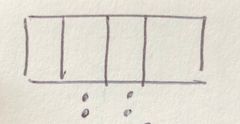
What type of shewa is it? |
The right-most one is SS and the left-most one is VS. |
|
|

What type of shewa is it? |
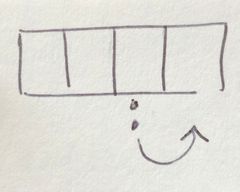
Look to the preceding vowel -if it’s long, then shewa is VS -if it’s short, then shewa is SS |
|
|
|
Under which gutturals is compound shewa found? |
א ה ח ע |
|
|
|
אֲ |
hātēp-pátah |
|
|
|
Shewa with gutturals… |
SS under gutturals is fine, but they don’t take VS therefore they must have compound shewa, making only minimal sound. |
|
|
|
בְּ |
in; with; by (means of) |
|
|
|
לְ |
to; for |
|
|
|
What is the Rule of Shewa? (Red Ryder Problem) |
Two vocal shewa cannot be side by side in Hebrew. |
|
|
|
Explain the Rule of Shewa for simple shewa. |
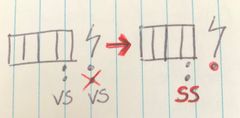
|
|
|
|
Explain the rule of compound shewa. |

|
|
|
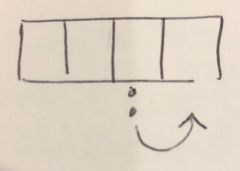
VS or SS? |
a) If the previous vowel is short the shewa is SS. The consonant is closing the syllable so divide to the left of the consonant with shewa. b) If the previous vowel is long the shewa VS. The consonant is NOT closing the syllable, but opening a new one. Divide before it. |
|
|
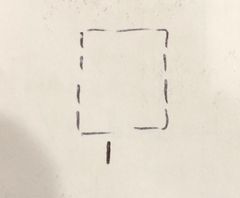
|
Masoretic accent: sillûq Below the consonant whose vowel is stressed. In the case of mater, sillûq is below the consonant. Otherwise, the marking goes near the left of the vowel. |
|
|
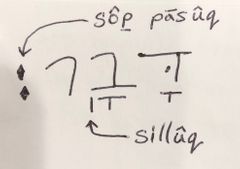
|
Always occur together on the last word of a verse. |
|
|
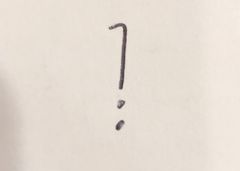
|
Found at the beginning of a word, it marks the conjunction “and”. Normally pointed with shewa, but sometimes seen with qamets or shirûq. |
|
|
|
Dagesh Lene |
b, g, d, k, p, t letters preceded by any vocal noise (VS, CS, vowels) will lose their dagesh. |
|
|
|
What are the purposes of Masoretic accent marks? |
-marking the tonic/stressed syllable for pronunciation -marking sentence punctuation -directions for cantillation -to distinguish grammatically similar forms of words |
|
|
|
A strong accent like sillûq may cause a short vowel in the accent syllable to become a long vowel. |
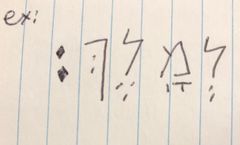
|
|
|

|
-does not mark the stress -written beside a vowel or under a syllable to stop the vowel being hurried over -never marks a tone syllable but marks a vowel before the tone syllable |
|
|
|
Méteg use #1 |
-prevent vowel reduction |
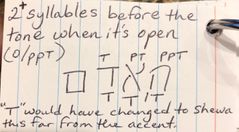
|
|
|
Méteg use #2 |
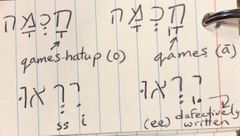
To ensure correct reading/pronunciation |
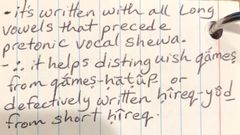
|
|
|
Méteg use #3 |
Directly before compound shewa |
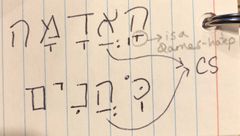
|
|

Maqqēp
|
Maqqēp -the word before the Maqqēp surrenders it’s stress to the following word |
|
|

|
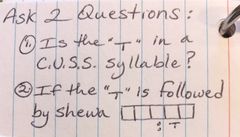
|
|
|
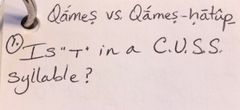
|
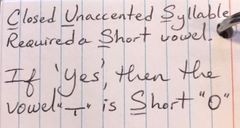
|
|
|
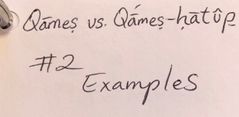
|

|
|
|
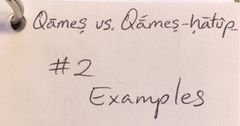
|
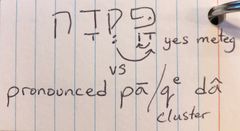
|
|

